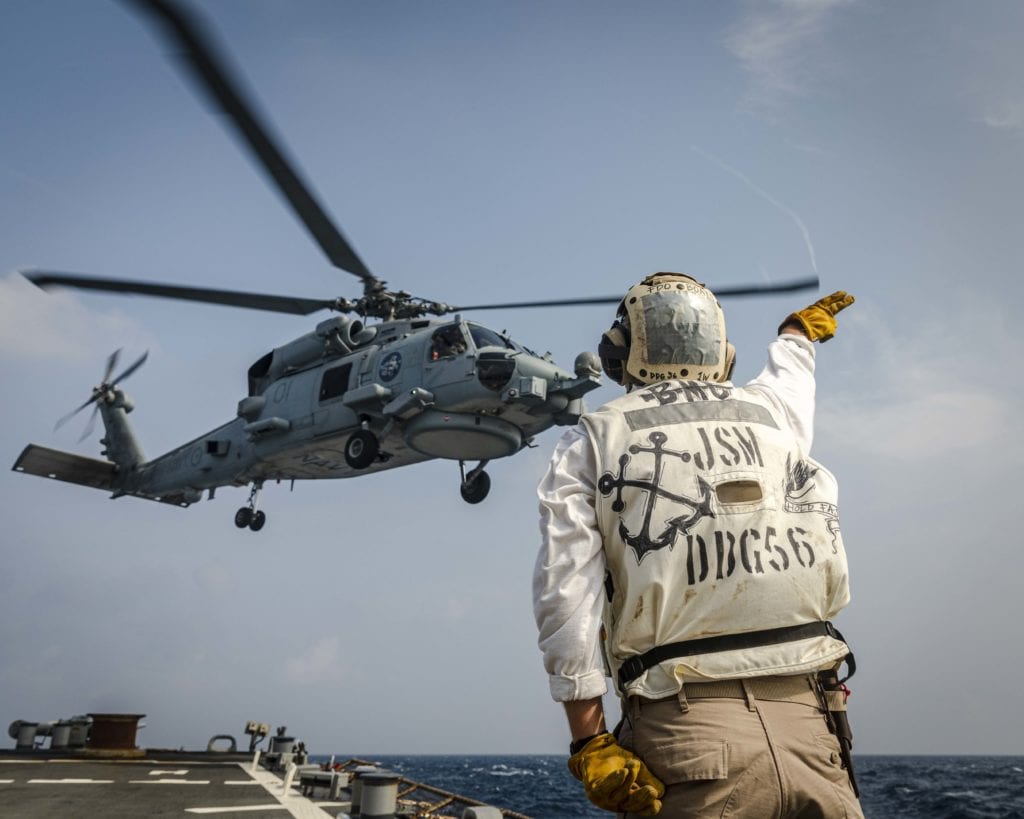
ARLINGTON, Va. — China’s political, economic and military aggressiveness is driving Asian countries like India and Vietnam toward closer ties with the United States, the head of U.S. Indo-Pacific Command says.
In recent years, China has locked horns politically and sometime physically with the Philippines, Vietnam and other nations bordering the South China Sea where the People’s Liberation Army Navy has built military outposts on artificial islands in disputed waters. Last summer China exchanged gunfire with India over their ill-defined border in the Himalayan region, leaving at least 20 Indian soldiers dead.
“The Communist Party of China represents the greatest long term strategic threat to security in the 21st Century,” Indo-Pac Commander Adm. Philip Davidson told the Surface Navy Association virtual symposium Jan. 12 in a live-streamed appearance from his headquarters in Hawaii.
The new U.S. Navy, Marine Corps and Coast Guard Maritime Strategy focuses on China and Russia, as the two most significant threats to global peace and prosperity. But in its introduction, the document singles out China “due to its growing economic and military strength, increasing aggressiveness, and intent to dominate its regional waters and remake the international order.”
The ill will China is generating has made several nations in the Indo-Pacific region reconsider their relations with the United States, Davidson said, citing particularly India and Vietnam.
“The strategic opportunity for the United States in the century going forward is a budding and building relationship with India,” he said, adding, “when you think about the economic potential, the opportunity for collaboration on issues that challenge the whole of the Indo-Pacific and around the globe, having India more closely cooperating with the United States — where possible — I think is a very important strategic opportunity.”
As for former enemy, and not-quite-ally Vietnam, Davidson said the relationship “has advanced greatly over the course of the last several years. In the near term, we’re very focused on immediate needs they have.” In addition to some military-to-military training, U.S. help included the remediation of dioxin contamination and unexploded ordnance left over from the war.
“We continue the accounting for our missing in action from the Vietnam War as well. That’s a gateway to deeper collaboration in the future,” Davidson said.
Davidson said there are a number of other countries with deep interest in the Pacific that the United States is working with, including Japan, the U.K., France, New Zealand, Australia and Canada.
“We can’t forget the Philippines is our ally, Thailand is our ally,” he said, adding there’s also more opportunity with Singapore, which supports the forward-deployment of U.S. Navy littoral combat ships.
- Shall We Play a Game? Winning Isn’t the Point, Experts Say - April 5, 2023
- U.S. Goal: Maintaining Extended Presence in Arctic’s Harsh Environment - April 4, 2023
- Joint, Combined Exercise Shows Marine Littoral Regiment Idea is on ”Right Track’ - February 24, 2023






